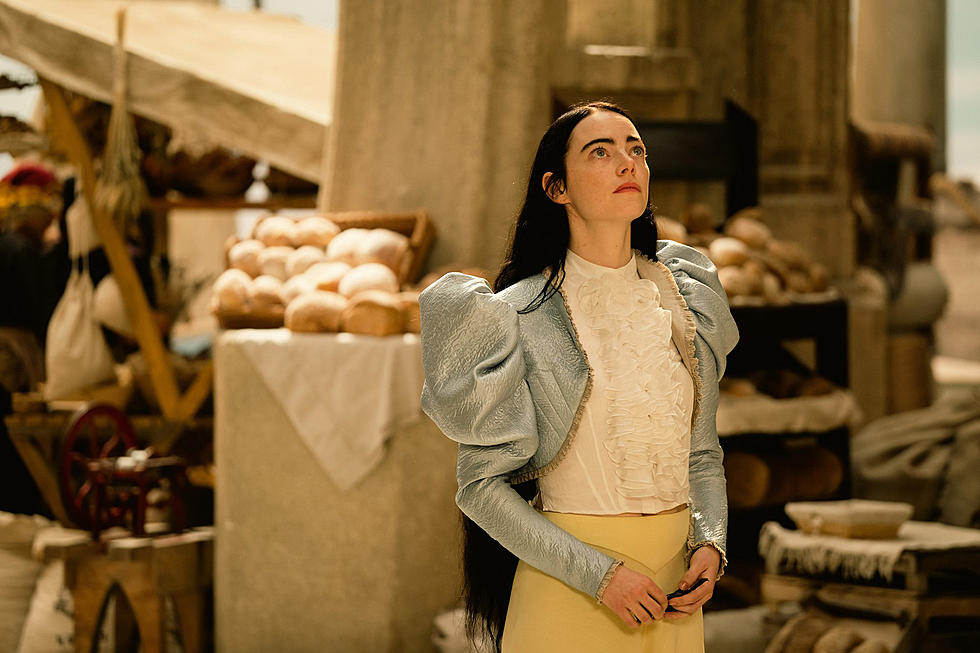
‘The Killing of a Sacred Deer’ Review: Colin Farrell and Yorgos Lanthimos’ Most Disturbing Film Yet
Yorgos Lanthimos delivered one of the best films of 2016 with The Lobster, a darkly comedic and comprehensive satire of relationships and romance, featuring a wonderful performance from a schlubby Colin Farrell. If you walked away from that film thinking that maybe the director of Dogtooth was softening a bit, Lanthimos returns this year — schlubby Colin Farrell in tow — with his darkest film yet. The Killing of a Sacred Deer is a predictably uncanny, pitch-black tragicomedy that pits a narcissistic surgeon against a sociopathic teenager in what is undoubtedly one of the most disturbing cinematic experiences of the year.
That’s no small feat in a year that already gave us the brazenly deranged mother! But if Darren Aronofsky’s film is a sledgehammer, Lanthimos’ latest is a scalpel, and he knows exactly where to cut his audience to elicit the most visceral reactions. The Killing of a Sacred Deer is a sharp examination of male narcissism that centers on Steven (Farrell), an over-confident surgeon who relishes his God-like power in matters of mortality. That power becomes the focal point in an increasingly dreadful game of tug-of-war with Martin (Barry Keoghan), a sociopathic teenager whom Steven has been mentoring.
It doesn’t take long to discern the true nature of their relationship, which is, on a very basic metaphorical level, a battle between God and Satan — though from Lanthimos’ uncanny perspective, the two are essentially interchangeable. When Steven brings Martin home to meet his wife, Anna (Nicole Kidman), and their children (Raffey Cassidy and Sunny Suljic), the narrative begins its grimly humorous transformation into an existential vivisection.
Perhaps The Killing of a Sacred Deer’s closest cinematic kin is the filmography of Ben Wheatley, a director fond of satirizing, prodding, and flat-out antagonizing the fragile masculine ego. Lanthimos and co-writer Efthymis Filippou make it fairly easy to clock Steven early on as the devil you know: Pathologically manipulative, he fetishizes (sometimes quite literally) the power bestowed upon him by his chosen vocation; he lies to his loved ones in an effort to exert control over every aspect of his life, selectively — and senselessly — doling out information as he sees fit. Steven offers a subtle variation on toxic masculinity that’s all the more alarming because it’s so casual and hidden in plain sight, in an expensive home in a neighborhood that’s “nice,” where nothing bad can happen to the predominantly white families that live there.
It seems only slightly coincidental that Steven and his family live in a white house with a red door, similar to the one in American Beauty — a film that absurdly glorifies a man’s pathetic midlife crisis. Lanthimos and Filippou pinpoint the narcissistic core of such a crisis and gleefully (if anything in this film can be described as such) exploit it via a teenage sociopath’s disturbing game of suburbanite roulette. Martin forces Steven to make an impossible choice: Kill a member of his family, or watch as they slowly die of a mysterious illness, one by one. It’s almost as if Lanthimos reimagined American Beauty as a Saw film.
Farrell is exceptional as Steven, whose paunch and hilariously tedious conversations about pricey wrist watches are conspicuous indications of his insecurities. But Barry Keoghan and Nicole Kidman are the film’s real MVPs — the former is wildly unnerving as Martin, a boy whose socially awkward demeanor conceals a dangerous sociopath. Kidman is fantastic as usual as a wife and mother who is alternately indifferent to the masculine posturing around her, and shameless in pandering to it. The clinical way she uses her sexuality to get what she wants says much more about the men around her and the banal predictability of their comically insipid desires.
Cassidy is also quite good as Steven and Anna’s teenage daughter, Kim, who develops an unhealthy fascination with Martin. Their interactions underscore the absurdity of the film’s gender dynamics; Martin negs Kim, who basically throws herself at him because, even though he’s clearly disturbed, he presents himself as her superior. The Killing of a Sacred Deer is preoccupied with power dynamics: How the power over life and death shifts between Steven and Martin; the way that power is wielded with equal indifference to the value of its subjects; and how people instinctively ingratiate themselves to whoever has the most power.
There is a sick feeling of satisfaction — or maybe it’s schadenfreude — in watching Martin co-opt Steven’s power and wield it against him, but that feeling is eclipsed in the third act as Lanthimos drives the narrative toward its inevitable conclusion. You can see very clearly where The Killing of a Sacred Deer is headed, but it takes a protracted path to get there, prolonging our discomfort until the very act of watching the film feels like its own bleakly comedic exercise. In doing so, Lanthimos provokes his audience to become vicarious participants in Martin’s game; like Steven, you may find yourself debating which of his children should die, and you might be alarmed by your own conclusion.
More From ScreenCrush









